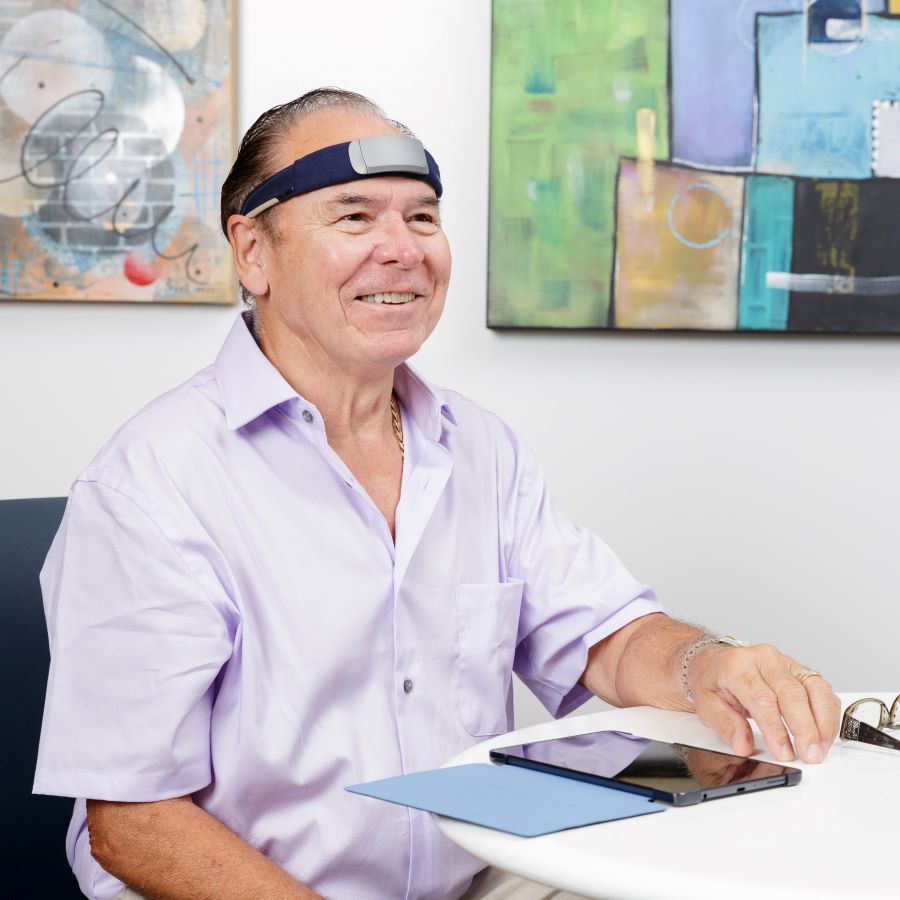The data collected on all of the trackers and their applications are de-identified (meaning the data are connected to an ID number, not to your name or any other personal identifying information). This means that if a tracker is lost or an unauthorized person tries to access the data, they will not be able to connect the data or tracker back to you. Further, data are protected by encryption that cannot be accessed without having credentials. These credentials are only known to key CLSA staff. No identifiable information will be shared with anyone outside of our established CLSA protocols. The data from this part of the study are kept, like all CLSA data, on secure servers located at McMaster University.
Muse Headband & Wrist ActiGraph
CLSA Core Study
Sleep headbands monitor different patterns of brain activity while sleeping that are potentially linked to various diseases including dementia, frailty and increased health-care use.
Participants who consent to these data collection measures will be asked to wear two sleep trackers:
- A Muse headband
- An ActiGraph tracker on their wrist
To collect data about sleep activity, participants will wear a tracker on their wrist (called a wrist ActiGraph) for at least 7 days in a row, and a sleep monitoring device on their head (called a Muse headband) for 3 nights in a row within those 7 days. A tablet will also be used with the headband to capture the data. The tablet will be locked so that it cannot be used for other purposes.
Sleep trackers are provided at the Data Collection Site visit and then returned to the CLSA by mail in the packaging provided.

Instructional Videos
Participant Resources
View information packages, consent forms and other documents relevant to your participation, including:

Frequently Asked Questions
Find answers to some of the most common queries about the CLSA.
There are no known medical risks to wearing sleep trackers. There are some minor discomforts you may have from the wrist ActiGraph. This discomfort is similar to wearing a watch. You may experience some minor disturbance of your usual sleep on the nights that you are wearing the Muse headband. You may find that the bands on the Muse headband may cause skin irritation.
You will be asked to complete this data collection every three years as part of your participation in the core CLSA study.
You will not be able to see most of the data the trackers collect or keep a copy of any of the data.
It is not possible to sign up for this data collection. Only CLSA participants who take part in in-home interviews and visits to Data Collection Sites are eligible to take part.
Your participation in this part of the CLSA is completely voluntary, and choosing not to wear these devices will not affect your participation in the CLSA overall. If you do agree, you may also decide to stop at any time.
To collect data about sleep activity, a tracker is worn on the wrist (called the wrist ActiGraph) for at least 7 days in a row, and a sleep monitoring device is worn on the head (called a Muse headband) for 3 nights in a row within those 7 days.
The sleep trackers are provided to you at your Data Collection Site visit and then returned by mail.
The sleep monitor (Muse headband) is an EEG (electroencephalogram) sleep headband, which captures EEG data using sensors on the forehead and behind the ears. These data are collected through an application that runs from the tablet that you will be provided with. Each night you will start the app and when you get up the next morning you will stop it. If you wake in the night but plan to go back to sleep (e.g., getting up to go to the bathroom) you will keep it on.
If you are having issues with the sleep trackers, please try the following:
- Watch our instructional videos.
- Fully charge the tablet and Muse headband every day.
- Check the Bluetooth connection if your Muse headband is not connected to the app.
- Restart the tablet if you encounter problems with the Muse app.























